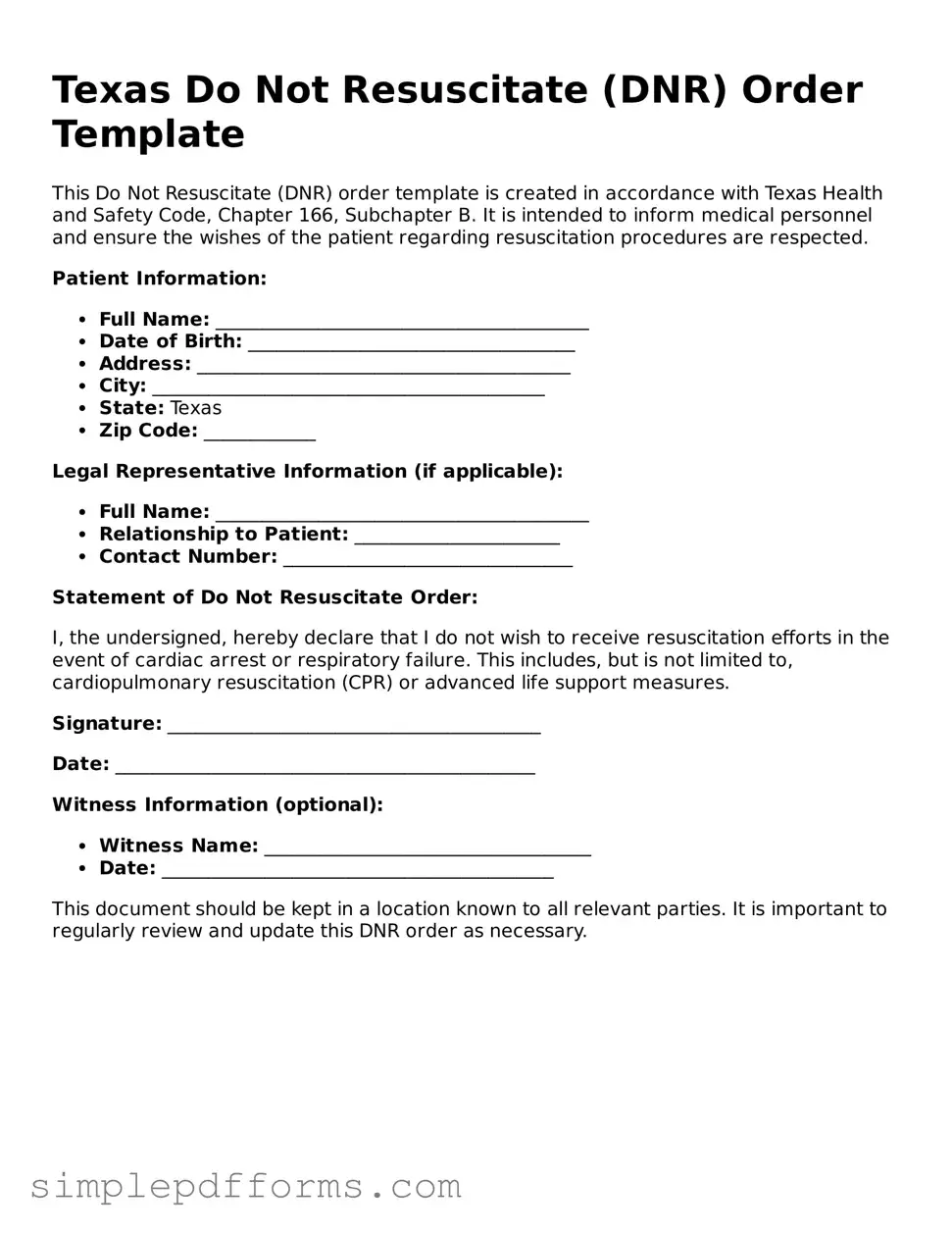Filling out a Texas Do Not Resuscitate (DNR) Order form is a significant step for individuals wishing to communicate their end-of-life preferences. However, many people make common mistakes that can lead to confusion or unintended consequences. Understanding these mistakes can help ensure that the form accurately reflects one's wishes.
One frequent error is failing to provide the necessary personal information. Individuals must include their full name, date of birth, and signature. Omitting any of this information can render the form invalid. It is crucial to ensure that all sections are filled out completely to avoid complications when the order is needed.
Another mistake involves not having the form signed by a physician. In Texas, a DNR Order must be signed by a licensed physician to be valid. Without this signature, the order may not be recognized by medical personnel. It is essential to consult with a healthcare provider to discuss the implications of a DNR and ensure that the order is properly executed.
Some individuals mistakenly believe that a DNR Order is a blanket statement about their healthcare preferences. However, it is important to understand that a DNR only addresses resuscitation efforts in the event of cardiac arrest. People often neglect to discuss their overall healthcare wishes, which can lead to confusion among family members and healthcare providers.
In addition, individuals sometimes forget to provide copies of the DNR Order to relevant parties. After completing the form, it is advisable to share copies with family members, caregivers, and healthcare providers. This ensures that everyone involved in the individual's care is aware of their wishes, preventing potential conflicts or misunderstandings.
Another common oversight is not regularly reviewing or updating the DNR Order. Life circumstances can change, and so can an individual's preferences regarding medical treatment. It is important to revisit the DNR Order periodically to ensure that it still aligns with current wishes.
People may also overlook the importance of discussing their DNR Order with family members. Open communication can help alleviate confusion and ensure that loved ones understand the individual's wishes. This conversation can provide comfort and clarity during difficult times.
Some individuals might fill out the form under pressure or without fully understanding its implications. It is vital to take the time to consider the decision carefully. Seeking guidance from healthcare professionals or legal advisors can provide valuable insights and support.
Lastly, individuals may misinterpret the role of the DNR Order in the context of other advance directives, such as living wills or medical power of attorney. Each document serves a different purpose, and it is important to understand how they work together. Clarifying these distinctions can help create a comprehensive plan for end-of-life care.
By being aware of these common mistakes, individuals can take proactive steps to ensure that their Texas Do Not Resuscitate Order accurately reflects their wishes. Thoughtful preparation and open communication with loved ones and healthcare providers can help ensure that preferences are honored when it matters most.
